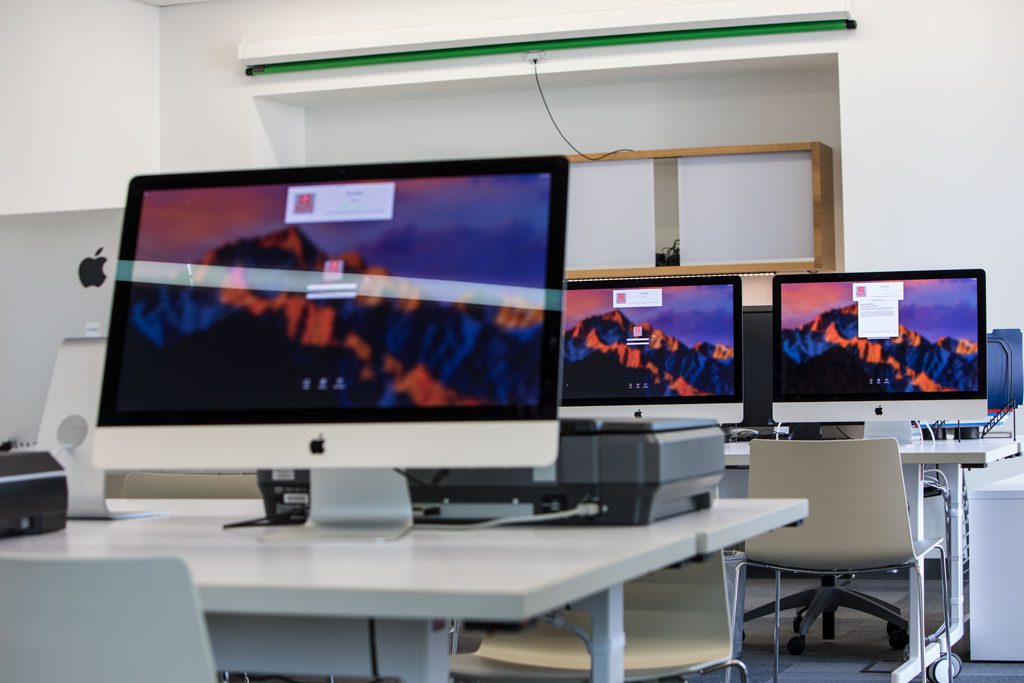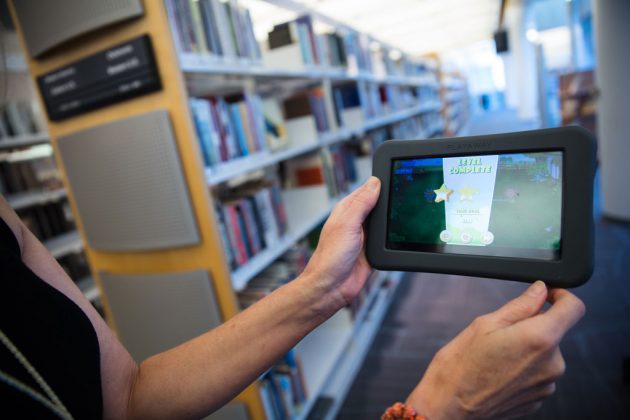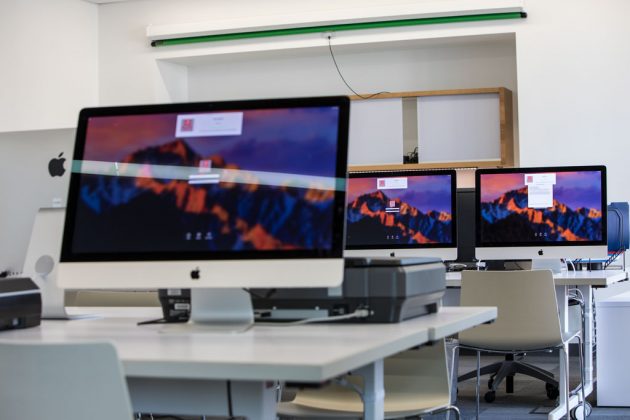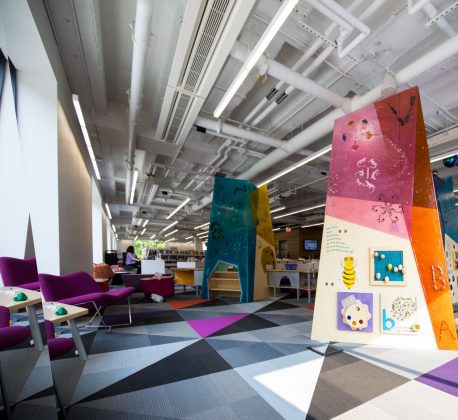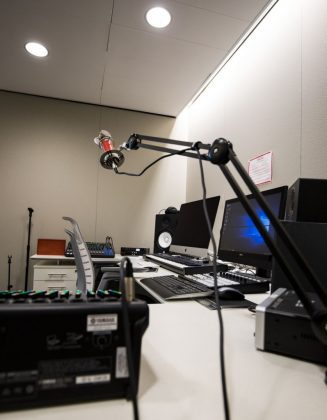
Libraries loom large in our culture as hushed, hallowed repositories of knowledge. The word conjures images of dusty tomes and a stern, bespectacled librarian poised to shush at the slightest provocation.
We might not think of libraries as having state-of-the-art flight simulators, exercise classes or puzzle rooms. We might not see them as shelters during disasters, resources for health information or animation studios. But more than half of Americans have visited a library or used library resources in the past year, according to the Pew Research Center, so they’ve seen that libraries no longer resemble the opening scene of Ghostbusters.
Information itself has changed so rapidly that one misconception about libraries is that they are only in the book game. But it’s really the hub of the information game now because words and data are no longer exclusively relegated to print.
“Libraries have always been about access to information,” says Risa Sargent, access services manager at the Ronald J. Norick Downtown Library of the Oklahoma City Metropolitan Library System. “In the past, information has largely been in printed book format. Libraries would help individuals navigate those printed resources to find the best, most reliable sources. Today, information comes in print and digital formats, and libraries … help individuals navigate those resources to find reliable information.”
Kimberly Johnson, CEO of the Tulsa City-County Library System, adds: “Libraries have historically been the go-to location for knowledge. As technology advances, libraries adapt to new methods of providing information.”
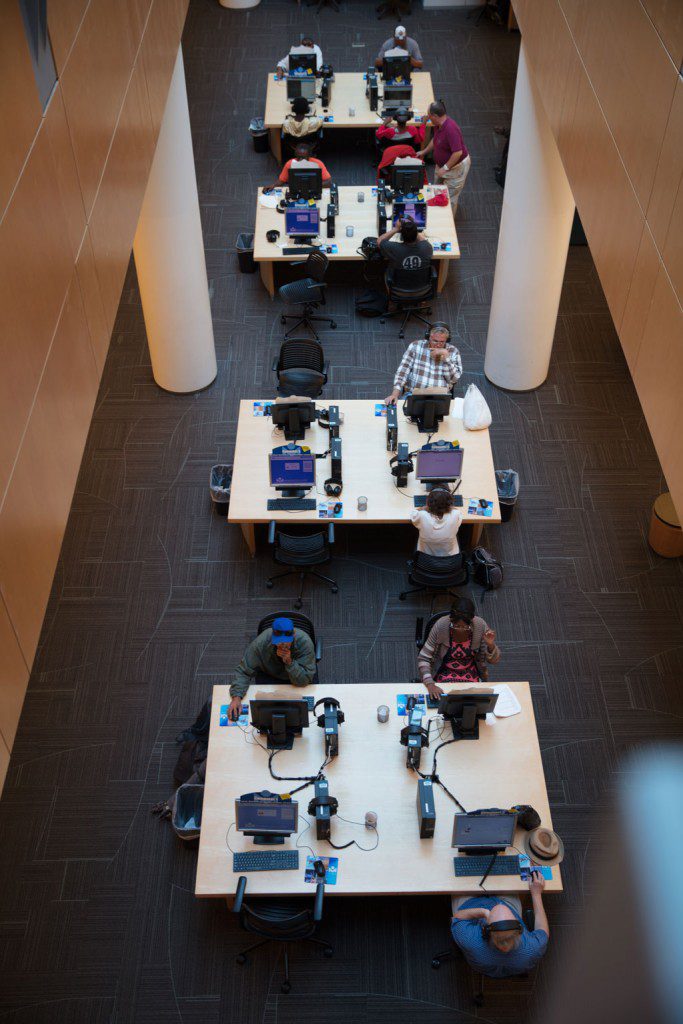
Johnson cites the American Electric Power Foundation Digital Literacy Lab at downtown Tulsa’s renovated Central Library, where programs bridge digital divides through coding, robotics and game design.
And for those who can’t make it to a library, the library often goes to them. In a tradition that spans at least a century, library staff often take information out of the building to where it is most needed, either by providing in-person services or digital resources.
“Outreach Services travels around Tulsa County visiting Tulsa Housing Authority locations and retirement villages to share library resources with readers not able to visit,” Johnson says. “By using the JobNow service, adults can access free online assistance with interview coaching, resume help and practice tests for professional licenses.”
Above all, programming is a cornerstone of public libraries.
“Aside from the typical story times and book clubs … our libraries offer a huge variety of activities that entertain teens and adults of all ages,” says Kim Terry, marketing and communications director for the OKC system. “One of the latest programs that both teens and young adults are enjoying is our ‘Escape Room’ game. Participants find clues and use logic and team-building to solve puzzles in time to ‘escape.’
“We also offer a variety of financial programs for … teens and adults, such as retirement planning and college financial aid programs. And health and wellness classes are always a favorite.”
Oklahoma faces frequent health, health-literacy and medical problems, so many libraries partner with each other or organizations like the Oklahoma Healthy Aging Initiative and the Oklahoma Department of Libraries to promote exercise, wellness and diet.
“Having been born and raised in Oklahoma, I have witnessed firsthand the many health challenges that face our state, and I can understand the influence of … [poor] diet, smoking, poverty, [in]accessibility to health care and lack of a widespread infrastructure [not] conducive to physical activity,” says Shari Clifton, associate director, professor and head of reference at the University of Oklahoma Health Sciences Center’s Robert M. Bird Library. “Health information outreach has the potential to positively impact health literacy and connect Oklahomans to … reliable, actionable information at the point of need.”
For decades, Clifton and other Bird librarians have traveled the state’s back roads to offer diverse health information programs. They recently created Oklahoma’s Health Information Specialists Program, which partners with public libraries to provide training on reliable, consumer-friendly health information for patrons.
“Libraries, particularly public libraries, are embedded in the communities they serve and are vital conduits for the flow of health information to the citizens of our state,” Clifton says. “Building a collaborative network of library and literacy personnel throughout the state facilitates the sharing of ideas, strategies and programming tailored to our unique Oklahoman perspective and … contribute[s] to a more robust culture of health.”
Those visiting libraries today notice changes in physical spaces. At OU’s Bizzell Memorial Library in Norman, the hi-tech Helmerich Collaborative Learning Center is a sprawling, modular area encouraging cooperative thinking and shared creativity. Central in Tulsa houses one of the latest trends in the library world, maker spaces, where hands-on learning tools include three-dimensional printers, engravers, sewing machines and a state-of-the-art recording studio.
E-books
Libraries are heavily invested in electronic resources, especially e-books. However, that does not mean the end of the printed page, librarians say.
“E-books are a wonderful resource that provide an additional avenue to access information,” says Kimberly Johnson, CEO of the Tulsa City-County Library System. “As the popularity of tablets and laptops increase, TCCL continues to reach new readers. However, printed books remain the most popular way to read in Tulsa County. As a library, we’re happy to get people reading regardless of what they’re reading or how. For Tulsans, it seems like there’s just no replacing the connection of a printed book and your favorite reading nook.”
Risa Sargent, access services manager at the Ronald J. Norick Downtown Library of OKC’s Metropolitan Library System, adds, “Printed materials still have an advantage over e-books in the ability to scan quickly through a work as well as causing less eye-strain than a screen.”

Library Architecture
Information delivery isn’t the only innovation in libraries; the locations themselves have evolved. The Oklahoma City and Tulsa systems either have had recent overhauls of large libraries or have building projects underway. The construction of libraries in Bethany and Capitol Hill will include study rooms, meeting spaces and expanded computer capacity. Tulsa’s Central Library reopened a year ago after a three-year renovation that created a collaborative community gathering space with state-of-the-art technologies.






















